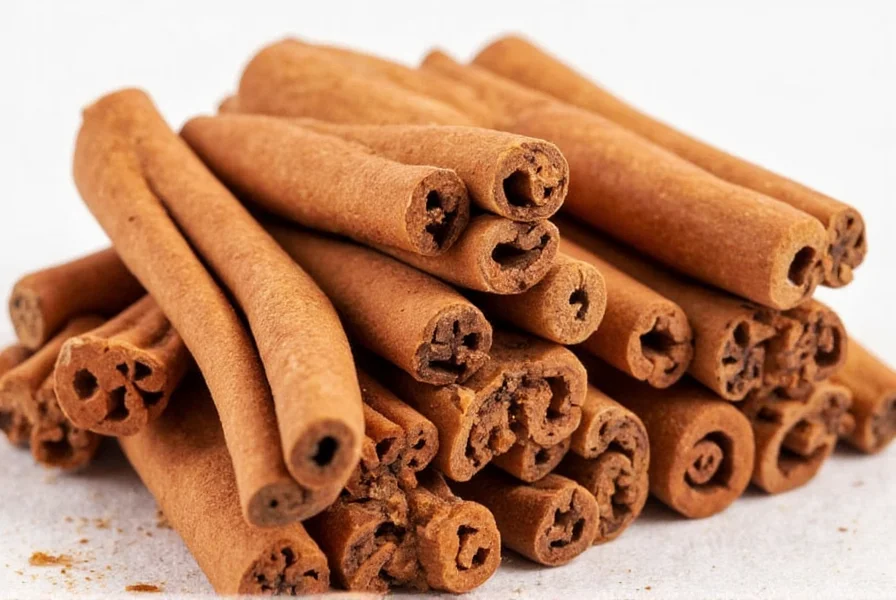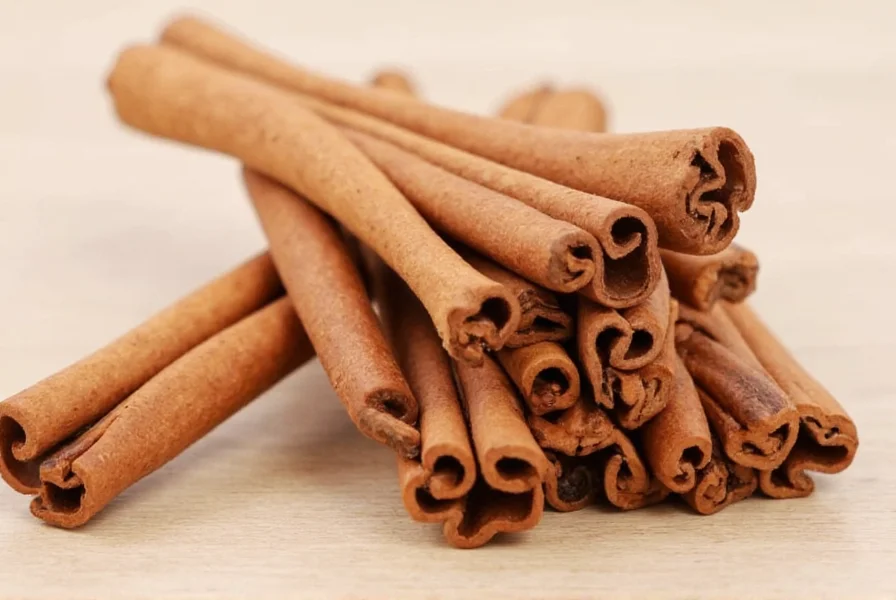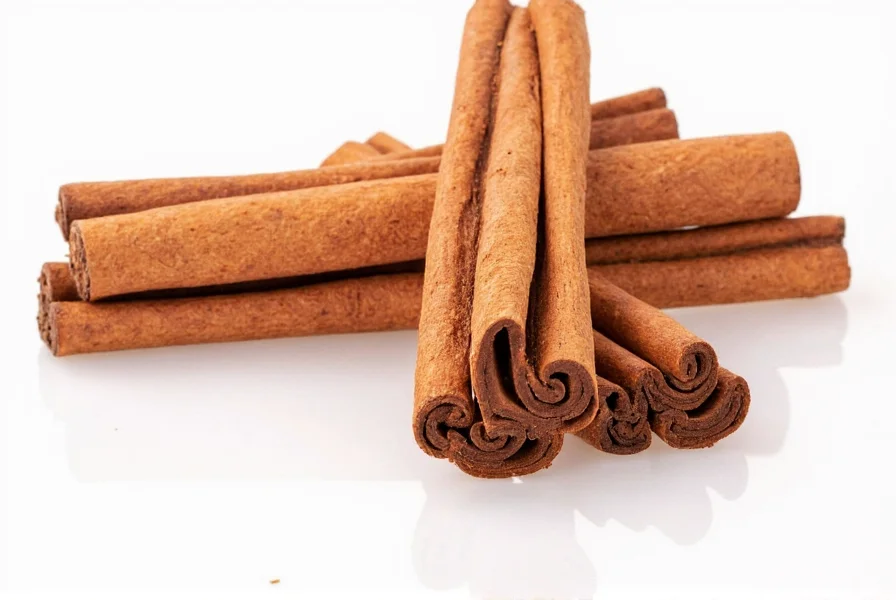Ceylon cinnamon represents the authentic form of this ancient spice that has graced kitchens and apothecaries for millennia. When exploring what is Ceylon cinnamon, it's essential to understand how this delicate spice differs from the more commonly available Cassia varieties that dominate supermarket shelves. The distinctive characteristic of Ceylon cinnamon lies in its paper-thin, multi-layered quills that form a delicate, almost lace-like structure when broken open—a visual hallmark that immediately distinguishes it from the single, thick, hard bark rolls of Cassia cinnamon.
Native to Sri Lanka (formerly Ceylon, hence the name), this precious spice grows on the Cinnamomum verum tree, which translates to "true cinnamon" in Latin. The harvesting process involves carefully stripping the inner bark from young branches, then gently pounding it to loosen the layers before drying. This meticulous method creates the signature delicate, hollow quills that crumble easily when touched—quite different from the rigid, difficult-to-grind sticks of Cassia cinnamon.
| Characteristic | Ceylon Cinnamon | Cassia Cinnamon |
|---|---|---|
| Scientific Name | Cinnamomum verum | Cinnamomum cassia |
| Origin | Sri Lanka | China, Indonesia, Vietnam |
| Bark Structure | Multiple thin layers, delicate quills | Single thick layer, hard stick |
| Coumarin Content | Very low (0.004-0.13%) | High (2.15-6.97%) |
| Taste Profile | Mild, sweet, complex | Strong, spicy, slightly bitter |
| Color | Light tan to pale brown | Dark reddish-brown |
Understanding what is the difference between Ceylon cinnamon and Cassia goes beyond mere appearance. The most significant distinction lies in their chemical composition, particularly regarding coumarin content. Ceylon cinnamon contains dramatically lower levels of coumarin—a naturally occurring compound that can cause liver damage when consumed in large quantities over time. This critical difference makes Ceylon cinnamon the preferred choice for regular consumption, especially for children, pregnant women, or individuals with liver conditions.
When examining how to identify Ceylon cinnamon, look for several key features. Authentic Ceylon sticks should appear as multiple thin layers rolled together like a cigar, creating a soft, crumbly texture that easily breaks between your fingers. The color ranges from light tan to pale brown, and the aroma should be delicate and sweet rather than overpowering. In contrast, Cassia cinnamon forms a single thick, hard stick that resists breaking and has a darker, reddish-brown color with a stronger, more pungent scent.

The historical significance of Ceylon cinnamon extends back thousands of years. Ancient Egyptians used it in embalming rituals, while medieval Europeans valued it more highly than gold. Sri Lankan kings guarded cinnamon forests as state secrets, and Portuguese, Dutch, and British colonizers all fought to control this precious spice trade. Today, Sri Lanka still produces approximately 80-90% of the world's genuine Ceylon cinnamon, maintaining traditional harvesting methods that have changed little over centuries.
When considering Ceylon cinnamon health benefits, research suggests this spice offers numerous potential advantages. Like other cinnamon varieties, Ceylon cinnamon contains antioxidants and may help regulate blood sugar levels, reduce inflammation, and support heart health. However, its significantly lower coumarin content makes these potential benefits accessible without the health risks associated with regular Cassia consumption. For those exploring is Ceylon cinnamon better than Cassia, the answer largely depends on intended use—Ceylon's delicate flavor suits desserts and beverages where subtle spice notes are desired, while Cassia's stronger flavor works better in robust dishes like curries and stews.
Culinary professionals often prefer Ceylon cinnamon for its nuanced flavor profile that enhances rather than dominates dishes. When baking delicate pastries, preparing traditional Sri Lankan rice pudding, or crafting fine chocolate desserts, Ceylon cinnamon's subtle sweetness complements other ingredients without overwhelming them. For those learning about Ceylon cinnamon uses in cooking, it's worth noting that this spice works exceptionally well in both sweet and savory applications—from Moroccan tagines to French crème brûlée.
Proper storage significantly impacts how to keep Ceylon cinnamon fresh. Store it in an airtight container away from light and heat, where it will maintain optimal flavor for 6-12 months. Unlike Cassia, which remains potent for years, Ceylon cinnamon's delicate essential oils evaporate more quickly, making freshness particularly important. For maximum flavor impact, consider grinding whole quills just before use rather than purchasing pre-ground cinnamon.
When shopping for authentic Ceylon cinnamon, look for specific indicators of quality. Reputable suppliers will clearly label it as "Ceylon cinnamon," "true cinnamon," or "Cinnamomum verum." Avoid products simply labeled "cinnamon" as these typically contain Cassia. The price point often reflects authenticity—genuine Ceylon cinnamon costs significantly more than Cassia due to its labor-intensive harvesting process and limited production. For those researching where does Ceylon cinnamon come from, verify that products specify Sri Lankan origin, as this remains the primary source of authentic Ceylon cinnamon.

As awareness grows about the differences between cinnamon varieties, more consumers are seeking authentic Ceylon cinnamon for both culinary and wellness purposes. Understanding what is Ceylon cinnamon empowers shoppers to make informed choices that align with their health goals and flavor preferences. Whether you're a home cook exploring new ingredients or someone interested in natural wellness approaches, recognizing the distinctive qualities of this premium spice enhances both your kitchen experiences and potential health benefits.
What makes Ceylon cinnamon different from regular cinnamon?
Ceylon cinnamon (Cinnamomum verum) differs from regular Cassia cinnamon in several key ways: it has multiple thin bark layers forming delicate quills rather than a single thick stick, contains significantly lower coumarin levels (making it safer for regular consumption), has a lighter color, milder sweet flavor, and originates from Sri Lanka rather than China or Indonesia.
Is Ceylon cinnamon worth the higher price?
Yes, Ceylon cinnamon is generally worth the higher price for regular consumption due to its significantly lower coumarin content. While Cassia cinnamon contains high levels of coumarin that can cause liver damage with frequent consumption, Ceylon cinnamon's minimal coumarin levels make it safer for daily use, especially for children, pregnant women, or those with liver conditions.
How can I tell if I'm buying real Ceylon cinnamon?
Authentic Ceylon cinnamon appears as multiple thin, fragile layers rolled into delicate quills that crumble easily when touched. It has a light tan color and subtle sweet aroma. Check labels for "Ceylon cinnamon," "true cinnamon," or "Cinnamomum verum"—not just "cinnamon." Genuine Ceylon cinnamon typically costs more than Cassia due to its labor-intensive harvesting process and limited production.
Can I substitute Ceylon cinnamon for regular cinnamon in recipes?
Yes, you can substitute Ceylon cinnamon for Cassia cinnamon, but you may need to adjust quantities. Ceylon cinnamon has a more delicate flavor, so you might use 25-50% more to achieve similar intensity. In recipes where cinnamon is a featured flavor (like snickerdoodles or cinnamon rolls), the substitution creates a more nuanced, complex taste. For robust dishes like curries, Cassia's stronger flavor might work better.
How much Ceylon cinnamon can I safely consume daily?
Due to its minimal coumarin content, you can safely consume up to 1-1.5 teaspoons (2.5-4 grams) of Ceylon cinnamon daily without health concerns. This is significantly more than the recommended 0.5-1 teaspoon limit for Cassia cinnamon. However, if you have liver conditions or take medications, consult your healthcare provider before regular consumption.











 浙公网安备
33010002000092号
浙公网安备
33010002000092号 浙B2-20120091-4
浙B2-20120091-4